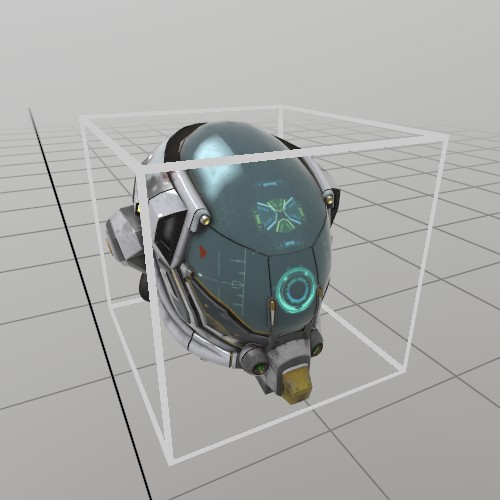Model.FromFile
static Model FromFile(string file, Shader shader)
Loads a list of mesh and material subsets from a .obj, .stl, .ply (ASCII), .gltf, or .glb file.
| string file | Name of the file to load! This gets prefixed with the StereoKit asset folder if no drive letter is specified in the path. |
| Shader shader | The shader to use for the model’s materials! If null, this will automatically determine the best shader available to use. |
| RETURNS: Model | A Model created from the file, or null if the file failed to load! |
Examples
Loading an animated Model
Here, we’re loading a Model that we know has the animations “Idle” and “Jump”. This sample shows some options, but only a single call to PlayAnim is necessary to start an animation.
Model model = Model.FromFile("Cosmonaut.glb");
// You can look at the model's animations:
foreach (Anim anim in model.Anims)
Log.Info($"Animation: {anim.Name} {anim.Duration}s");
// You can play an animation like this
model.PlayAnim("Jump", AnimMode.Once);
// Or you can find and store the animations in advance
Anim jumpAnim = model.FindAnim("Idle");
if (jumpAnim != null)
model.PlayAnim(jumpAnim, AnimMode.Loop);
An Interactive Model

If you want to grab a Model and move it around, then you can use a
UI.Handle to do it! Here’s an example of loading a GLTF from file,
and using its information to create a Handle and a UI ‘cage’ box that
indicates an interactive element.
Model model = Model.FromFile("DamagedHelmet.gltf");
Pose handlePose = new Pose(0,0,0, Quat.Identity);
float scale = .15f;
public void StepHandle() {
UI.HandleBegin("Model Handle", ref handlePose, model.Bounds*scale);
model.Draw(Matrix.S(scale));
Mesh.Cube.Draw(Material.UIBox, Matrix.TS(model.Bounds.center*scale, model.Bounds.dimensions*scale));
UI.HandleEnd();
}
Found an issue with these docs, or have some additional questions? Create an Issue on Github!
